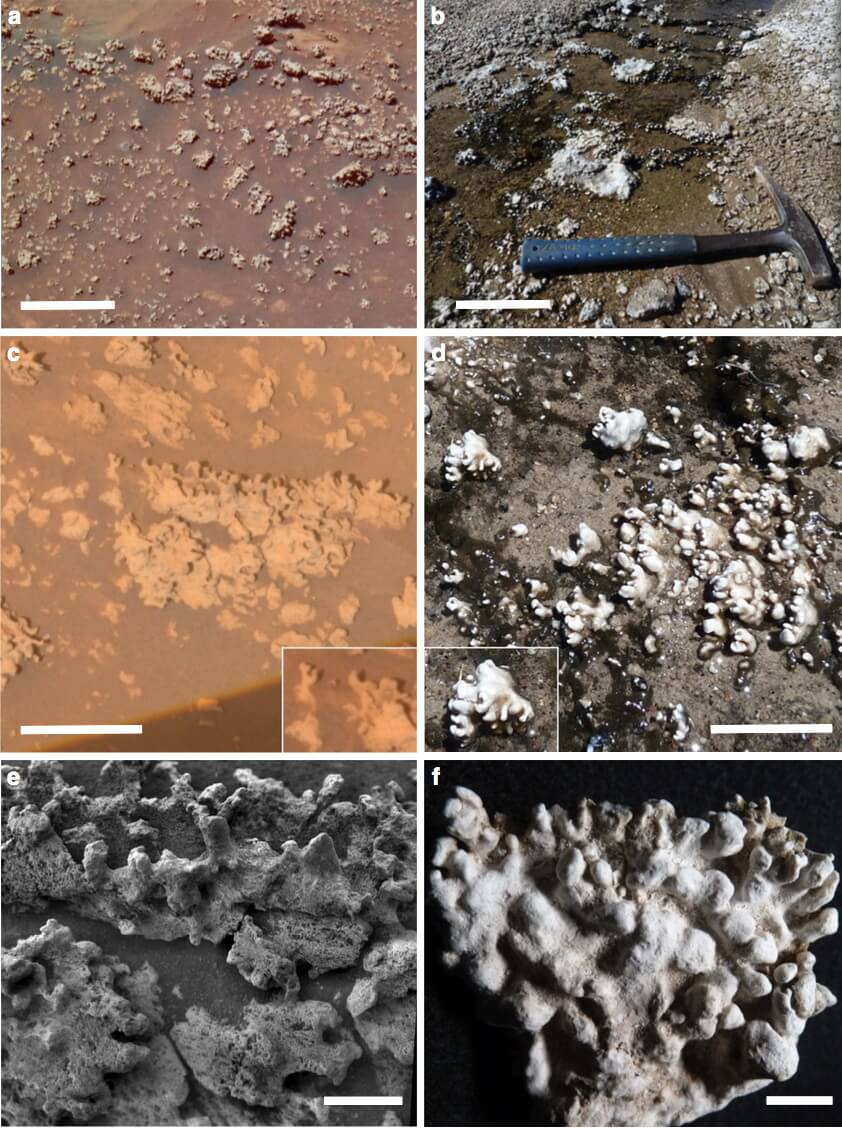- Get link
- X
- Other Apps

If one day we find evidence of existence in the past of life on Mars, then most likely this evidence will be presented in the form of biosignatures — imprints that could be left only by living organisms. Convincing evidence has not yet been found, but the latest analysis of silica minerals found by NASA's Spirit rover puts us one step closer. The fact is that the found minerals are very similar to those deposits that are formed under the influence of microbial life on Earth. Thanks to this find, it has already been dubbed "potential biosignature."
To clarify: the discovery of NASA does not mean the discovery of life on Mars. It means that we may have found evidence of the existence of life on the Red Planet in the past. Which, in turn, pleases no less.
An article published last week in the journal Nature Communications describes a new possibility for life on Mars in the past. In the article, scientists make a comparison between the opaline silica found in the Martian crater Gusev and opaline silica in the valley of the El Tatio geysers (El Tatio) in Chile. Opal-shaped silica, a bizarre mineral covered with nodules with a lack of crystalline structure, was first discovered on Mars in a Spirit rover in 2007. At that time, scientists believed that its presence could be evidence of hydrothermal or volcanic activity on the Red Planet.

Opal-shaped silica from the valley of geysers El Tatio
“In fact, this opal-shaped silica can be formed in different ways,” explains planet scientist Steve Raff of the University of Arizona, who leads the new study.
“It can form near hot springs or geysers, or in fumaroles — hot springs of volcanic origin,” the researcher adds.
Raff and his colleagues initially suggested that deposits of opal-shaped silica, discovered by Spirit, formed billions of years ago from basalt rock, which in turn was leached with fumaroles with sulfuric acid. However, after a more detailed analysis of the information collected by "Spirit", scientists began to lean more towards another version: the source of opal-like silica may be hot and mineral-rich water. After the Spirit rover got stuck in the sand in 2009 and failed in 2010, it was not possible to check the likelihood of such a theory.

Comparison of the structure of opaline silica found on Mars (left image) and in El Tatio valley (right image) with different levels of approximation: ab - scale 10 cm; cd - scale of 5 centimeters; ef - scale 1 cm
The idea for a new study came to Raff a few years ago. Reading a scientific article on volcanology, he was confronted with a reference to El Tatio, an extensive Chilean geothermal system located at an altitude of 4,200 meters above sea level, whose hot springs and geyser channels contain deposits of opal-shaped silica. Later, the scientist was surprised by how much the deposits from El Tatio resemble those found in the crater Gusev on Mars. The surprise was primarily due to the fact that Mars in its current state is a very cold desert.
To learn more about how opalized silica is formed on Earth, Raff and his colleague Jack Farmer personally went to El Tatio to study the environment and collect samples for spectral analysis. Scientists have found that El Tatio minerals are most often formed in shallow geothermal springs. In addition, they show signs of microbial life. And more importantly, they are similar to those deposits that were discovered on Mars.
If in more detail, asymmetric lumps of mineral seals that look like fingers are a characteristic feature of the discovered deposits of opaloid silica on Mars. On Earth, as noted above, this feature is also found. The fact is that these lumps are formed due to a sticky layer of microbes called biofilm. Thus, microorganisms are trying to protect themselves from high temperatures by covering themselves with a shell of silicate minerals and in fact self-burying themselves.
“Now, of course, we cannot say that this process was happening passively. Typically, these microbes appear in shallow water, and then settle on the sealing nodules of opal silica. The layers of these seals increase over time, effectively sealing the microorganisms on them, ”says Raff.
Having obtained all the necessary data, the scientists came up with an intriguing assumption: if opalized silica on Mars was formed under similar environmental conditions, it consists of the same material and has the same shape - does this mean that it was formed in the same way as earth silica?
We will not be able to give an exact answer to this question until we send a new mars rover to Gusev's crater, collect samples and bring them to Earth for analysis and research. In 2020, NASA plans to land on Mars a new rover, which will replace the “Curiosity”, but the landing site for the new autonomous Martian scientific laboratory has not yet been selected. However, if scientists can prove that silica deposits on Mars and Earth have structural coincidences, then this will be direct evidence of the presence of true biosignature on the Red Planet.
And maybe not.
“In my opinion, these deposits can be the result of abiotic reactions and only partially biosignatures,” comments Rocco Mancinelli, astrobiologist at the Ames Research Center of the Aerospace Agency NASA, who did not participate in the study described today.
Whatever the case, these deposits are of great interest.
The article is based on materials .
- Get link
- X
- Other Apps
Comments
Post a Comment